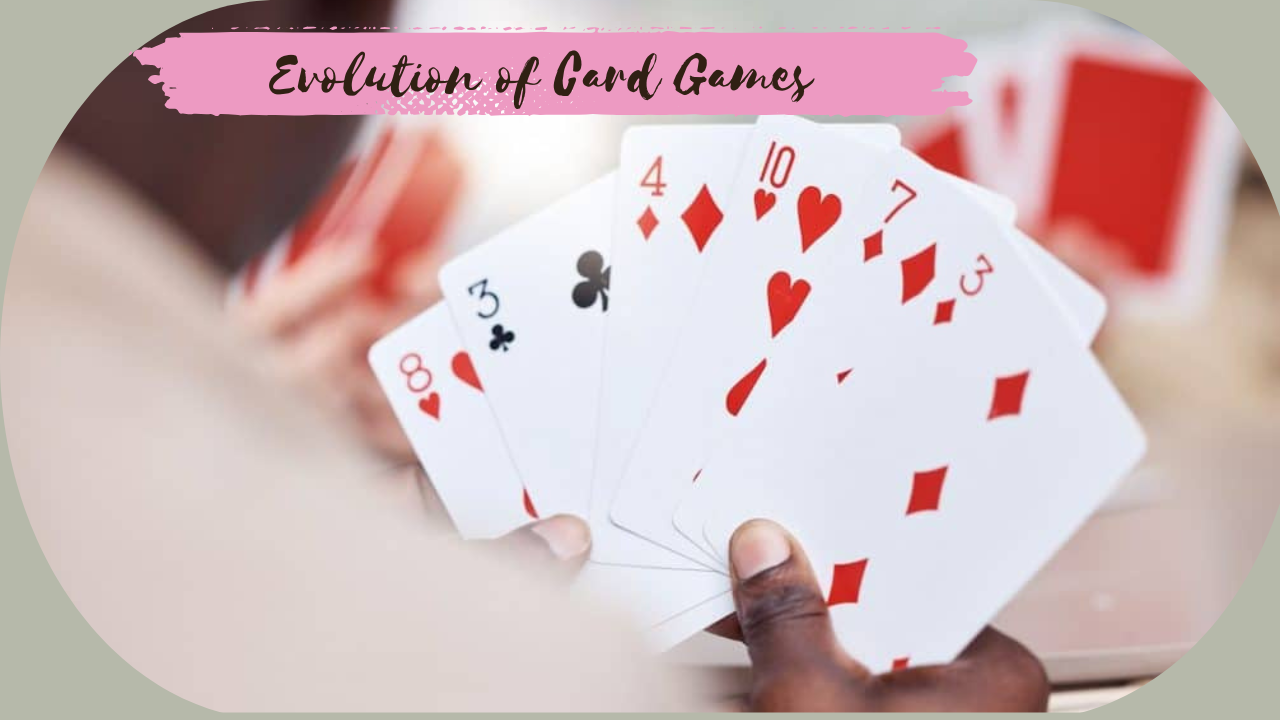The Evolution of Card Games have been in circulation for centuries and capture people’s imagination from every corner of the world. They entertained king and queens, inspired strong competition in the taverns and have now even become digital. But have you ever wondered how these simple maps have evolved over the centuries?
Let’s take a journey through time – from old dynasties to online casinos – to see how the card games have been transformed and adapted to each era.
The origins: card games in ancient China
Historians believe that the first playing cards in the ninth century in China came during the Tang dynasty. At the time, the Evolution of Card Games were not exactly like the ones we use today. They seemed more paper tiles, often wonderfully illustrated and linked to traditional games or even game activities.
These first Evolution of Card Games were often tied by Chinese coins, in which the packages represented a different thought of coins. It is fascinating to think that what has started as a pastime in the imperial courts has finally made its way on the continents.
The journey to the Islamic world
From China, the card games have passed the commercial routes and reached the Islamic world against the twelfth century. In particular, Mamluks Egypt played an important role in the design of modern game.
Mamluk decks have shown four combinations, swords, coins and polo sticks – which have a remarkable resemblance to the combinations that we recognize in different forms today. The art of these cards was breathtaking and often had elaborate geometric drawings and calligraphy.
Arrival in Europe
In the 14th century, playing cards in Europe, perhaps through Italy or Spain, had embarked. At first, they were luxurious for the rich to produce hand painted and expensive. Over time, the invention of pressure pressures in the 15th century made cards more affordable, so that they can spread quickly in public. The costumes have also developed and finally became the heart, the spade, the clubs and the diamonds in the French bridge – the version that most of us know today.
Regional variations and cultural influence
One of the most interesting aspects in the history of the card game is the way different regions are filming on the bridge.
Italy and Spain have retained costumes similar to the Mamluk style: swords, cups, coins and clubs.
Germany has presented acorns, leaves, hearts and bells. France has popularized the packaging system that we now see in most of the world.
These changes were not only aesthetic,: they influenced the types of games that people played, from playing games as a whist to favorites of gambling as a lighthouse.
Card games and social life in the Renaissance
During the Renaissance, the Evolution of Card Games became a fixed point of social meetings. He played nobles in lush salons, while ordinary people have fun in pubs.
Games like piquets and shadows have become favored between the elite, with rules and strategies that were much more complex than simple games based on opportunities. Card games have also been used to demonstrate a means, mind, memory and even political alliances.
The 18th and 19th centuries: the strategy encounters the game
In the 18th and 19th centuries, card games were deeply rooted both in leisure and the culture of the game. For example, poker took shape in North America and the mixed influences of the European card game with new structures in Paris.
In the meantime, games like Bridge and Canasta have become main social supports that require teamwork, strategy and skills. The game rooms across Europe and the United States have shown card tables where luck could change with the reversal of a card.
The rise of casino card games
The 20th century saw the explosion of card games based in the casino, with blackjack, baccarat and international poker sensations.
The simple rules of Blackjack and the fast pace made him one of the random and serious players. Poker tournaments, in particular Texas Hold’em, have transformed the players into celebrities and made card games into a sport for spectators.
 The digital revolution: card games go online
The digital revolution: card games go online
Then came the Internet – and with this the transformation of card games into a truly global phenomenon.
Online casino, multiplayer app and video games adjustments have brought card games to the houses (and bags). Suddenly, they could play poker with someone from the world without ever leaving their sofa.
This era also introduced live dealers and connected the thrill of personal game with the comfort of online platforms.
Evolution of Card Games in the mobile era
Smartphones have brought things to another level. Mobile applications made Evolution of Card Games accessible everywhere and at any time – which they were waiting online, line up or relaxed at home.
Free models, integration of social media and virtual rewards have kept players without requiring real money, even if integrated purchases have become an important industry engine.
The modern mix of tradition and technology
Today there are card games in a fascinating balance between tradition and innovation. You can still take a physical deck for a face -to -face game with friends, or you can access a VR casino for a compelling and high -tech experience.
The main appeal has not changed: the card games combine happiness, ability and human interaction. But the way we bring them continues to evolve with technology, culture and global connectivity.
Read More: Beginner’s Guide to Smart Betting in 2025
Conclusion
From hand -painted treasures in the royal courtyards to thin furniture apps in our pockets, the Evolution of Card Games have evolved into remarkable ways. They have adapted to different cultures, accepted new technologies and have remained one of the most popular forms of entertainment in human history.
Whatever the way technology is progressing, the simple thrill of mixing a deck and playing a hand will always take a special place in our hearts.



